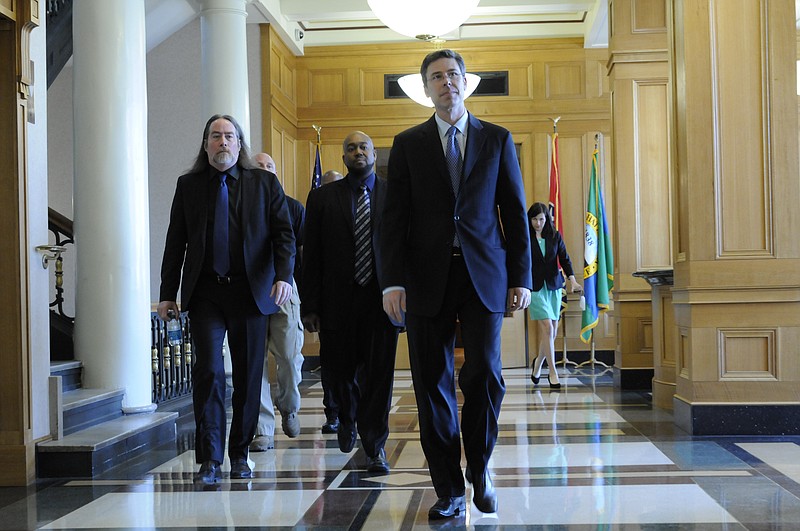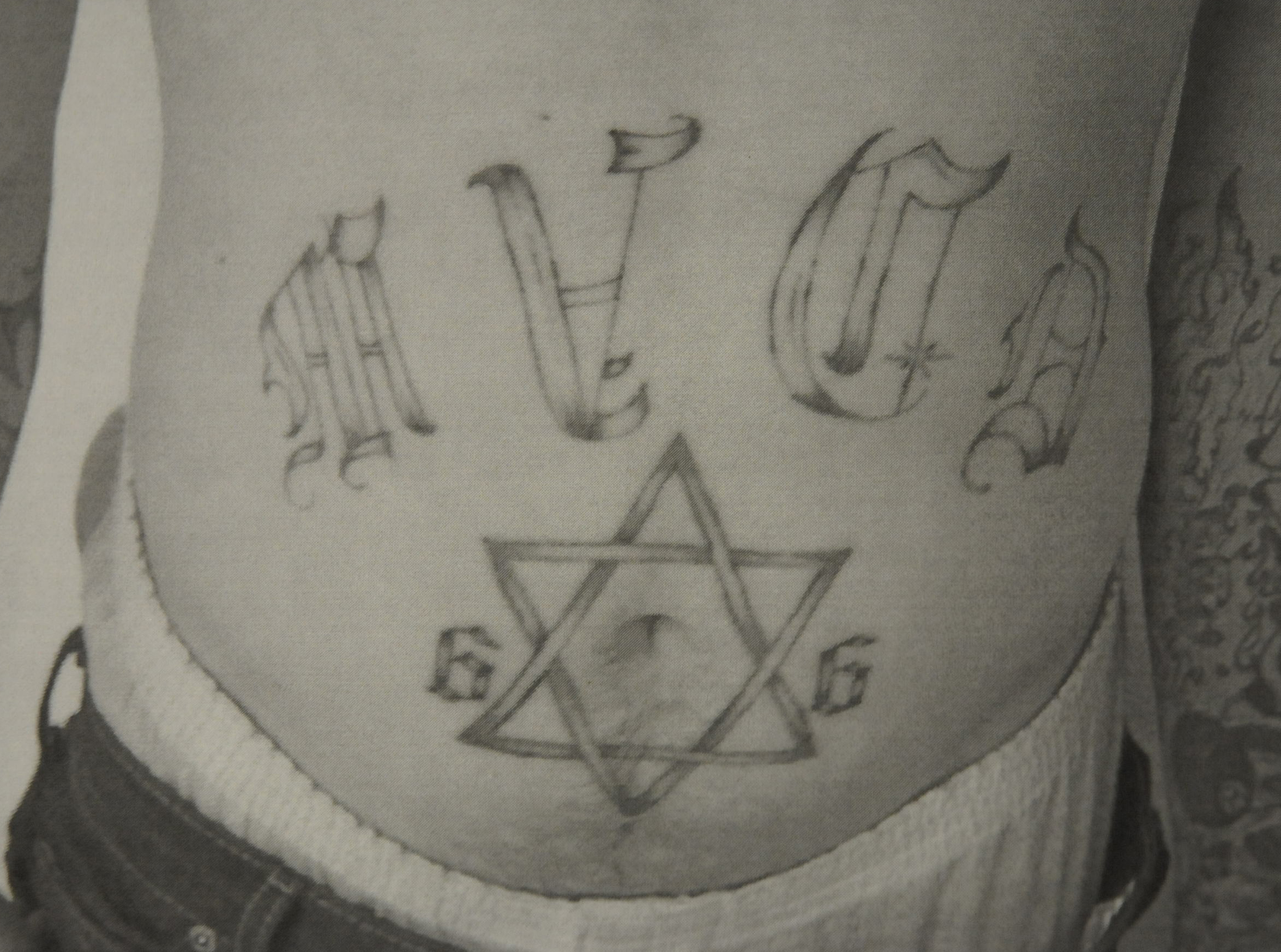VRI BY THE NUMBERS
6 call-ins 114 gang members attended those call-ins 8 enforcement actions 213 gang members arrested in enforcement actions 421 gang members "touched" by enforcement actions 3 gangs targeted in multiple enforcement actions 114 custom notifications 39 gang members report actively working at jobs 28 gang members attended job training 43 gang members attended GED classes Source: Chattanooga Police Department, City of Chattanooga Chattanooga Homicides by Year 2015, to date: 9 2014: 27 2013: 19 2012: 24 2011: 25 2010: 20 2009: 11 2008: 20 2007: 16 2006: 19 2005: 23 2004: 16 2003: 24 2002: 21 2001: 26 Source: Chattanooga Police Department, Times Free Press archives CHATTANOOGA VIOLENCE AND VRI BEFORE VRI (March 2013 - Feb. 2014) ----- AFTER VRI (March 2014 - Feb. 2015) Total shootings, both fatal and non-fatal: 128 ----- 115 Gang-related shootings, both fatal and non-fatal: 82 ----- 66 Total homicides: 18 ----- 26 Gang-related homicides: 13 ----- 14 Source: Chattanooga Police Department
When the 24 men -- all black, all young, all gang members -- filed into the gymnasium-style room on a cool April night, police and city leaders were ready.
They'd set up rows and rows of folding chairs -- now filled with officers, judges, community members, probation officers, pastors -- plus a projector and a screen in the front.
Two rows of seats were set apart from the rest, front and center. The 24 men filled those seats, some slumped back, some ramrod straight, one on crutches. (Got robbed, he'd say later.)
They sat there for 90 minutes while police and prosecutors and community members delivered a message: Stop shooting.
Stop shooting or else.
It was the sixth time city leaders have had such a meeting, a call-in of gang members -- most on probation -- to deliver the central message of the city's Violence Reduction Initiative (VRI). If you don't stop shooting and killing people, police said, we're going to target you and everyone else in your gang. If you stop shooting, we'll help.
Police say they're following the VRI strategy -- created by criminologist David Kennedy in the 1990s and since implemented in more than 50 cities in the United States -- to the T.
The hallmark of Kennedy's strategy is a swift, dramatic drop in homicides. New Orleans' homicides dropped 18 percent in the first year of Kennedy's program, from 181 to 153, according to media reports. In Hartford, Conn., homicides dropped 30 percent the first year. In Baton Rouge, 23 percent.
In Chattanooga, gang-related gun violence -- gun homicides and non-fatal shootings together -- has dropped 20 percent since the VRI started, according to police. Yet the city didn't see the hallmark plunge in homicides alone. Homicides went up.
Among gangs, homicides are up by one, compared to before the VRI. In the city as a whole, homicides are up by 8 -- that's a 44 percent increase compared to the 12 months before the VRI started.
No one is quite certain why.
***
Mayor Andy Berke rolled out the VRI in March 2014 with much fanfare -- fewer shootings, real results in 2014, he promised -- and in the year since, 114 gang members have attended call-ins. The police have cracked down on gangs eight times when the shooting didn't stop, and in those crackdowns, 213 gang members were arrested.
Police and city leaders have jumped into the fray so enthusiastically that Kennedy's organization, the National Network for Safe Communities, is already holding Chattanooga up as an example: This is how to do it, they say.
"Chattanooga is, ironically, despite the fact that you're not seeing the major reductions that we would like to see in the first six months or nine months, or a year -- even though we're not seeing this major dropoff of, say, 40 percent reduction in homicides -- it is still one of the best city interventions we know," said Amy Crawford, deputy director.
Early on, Kennedy said Chattanooga was set up to be one of those cities where the plunge came fast and hard. Crime will decline quickly in Chattanooga, he said after the first call-in. The city's groups are very connected. Word will travel.
Now, a year later and without a plunge, Crawford said that every city responds differently. Some cities see an immediate, drastic drop in homicides, she said. Others see an initial increase and then a sharp drop. In some places, homicides just steadily decline.
"When it doesn't happen quickly, it doesn't mean it isn't working," she said.
She couldn't say why homicides aren't following the downward trend in gang gun violence. Overall shooting incidents went down from 128 to 115 while homicides climbed. And neither could Chief Fred Fletcher.
"We don't know," he said.
Could be gang members are better armed, have better aim. Could be victims aren't getting to the hospital fast enough. He can't say exactly.
What he does know is what he's done during the last year.
"Gang and gun violence have gone down dramatically," he said. "Overall shootings incidents, including homicides, are down 10 percent. Most communities would stand on mountaintops and scream that shootings were down 10 percent. And our group member-involved shootings are down 20 percent. Those are big numbers."
He and the National Network for Safe Communities employees are constantly reviewing what police and city leaders are doing, whether they're doing it right and what they can do better, he said.
They've changed the way gangsters' family members are invited to the call-ins to ensure more people show up. They've tracked down and met individually with 114 gang members to warn them not to shoot. They've created a whole new way of interacting with victims of violence that loops in community members and social workers.
"How do I know that without our efforts there wouldn't have been 40 homicides last year?" Fletcher said. "What if it would have been three times as high if we weren't doing this? What if we stemmed it? How do I prove that?"
***
A key part of VRI is federal prosecution. Sentences in the federal system are longer and more strict than state sentences, and VRI intentionally uses the threat of federal prosecution to try to put pressure on gang members to stop shooting.
At the latest call-in, some of the 24 men in the seats shook their heads in disbelief when Meredith Edwards, the special federal prosecutor hired by the city to handle VRI cases, outlined how the men could face 10, 15, 20 years in federal prison on certain drug and gun crimes.
Since she was hired in October 2013, Edwards has indicted about 60 defendants, said Assistant U.S. Attorney Chris Poole. But the office doesn't mark one case as VRI and another as not-VRI, he said, so it's hard to say exactly how many cases landed on her desk exclusively because of VRI.
The volume of cases out of Hamilton County involving guns, drugs and gang members that go federal has definitely risen since Edwards started, Poole said. In the 21 months before she started, Poole's office took about 97 such cases. In the 19 months since, they've taken about 155.
"We are able to take more cases than we were taking before," he said. "And in order to support VRI, we took cases we would not have taken prior, based on our own intake guidelines."
The opposite part to the threat of federal prosecution is the offer for help: If your gang doesn't stop shooting, we'll crack down. If you do stop shooting, we'll help you.
It's hard to track how many gang members have taken authorities up on that offer of help. Public Safety Coordinator Paul Smith says 121 VRI participants have gotten jobs through the initiative and 39 report that they're still actively working.
Nearly all of those men found work through a staffing center on Brainerd Road -- show-up-in-the-morning-and-we'll-send-you-to-your-job-for-the-day type work.
J.W. Cole, who owns Command Center Staffing, said only a handful of the men who arrived at his front door because of VRI have secured permanent jobs. Maybe 10, he said. The rest are on construction jobs, day jobs, weekend assignments.
The work includes positions in factories, warehouses, construction sites, kitchens, Smith said.
"These are guys who with their criminal records would not have gotten jobs before," he said.
The city and police have consistently refused to release the names of gang members who are involved in VRI, so it's impossible to independently verify many of the figures officials provide -- both on the prosecution and social services sides of the equation.
Some community members in high-crime areas like College Hill Courts and East Lake Courts say they don't feel any safer. Some have never heard of the VRI.
Even community members who believe the program is doing good work, like Pastor Kevin Adams at Olivet Baptist Church, also see flaws.
Last year, police outfitted many Gangster Disciples with ankle bracelets during an enforcement action against the group. The ankle bracelets were put on validated Gangster Disciples as a condition of their probation, Fletcher said. The devices required the men to be home between a certain time -- from 6 p.m. to 6 a.m., for example.
Adams said he got calls from at least two people he knew were out of the gang life who'd been outfitted with ankle bracelets. They wanted to know why they'd been included.
"I know firsthand that two of these guys weren't in it anymore," Adams said. "When [police] do these kind of things, does it instigate [violence] or curb it? Does it curb down violence when they go out and put ankle bracelets or hit these guys' houses? It's like a swarm of bees. Does it fire them up or cool them down?"
Fletcher said he tries to install ankle monitors on every probationer who is part of a gang that is being targeted in an enforcement action.
"Nothing sends the message home like 'here are direct consequences,'" he said.
He rejected the idea that police put ankle monitors on men who had been out of the gang life.
"I have never met a single gang member who is being held accountable for being a gang member who [admits he] is still a gang member," Fletcher said. "It's the same reason that when police find heroin in your pants, they're not you're pants."
Looking forward, the police department and city leaders plan to keep doing what they're doing. The VRI has evolved during the first year and will continue to evolve, Fletcher said.
"We are not going to change because it is not responding as quickly as we or anybody would like," he said. "This is the right way to treat people. This is the right way to do things. We are going to continue to do it and we will find ways to continue to evolve."
So far in 2015, there have been nine homicides in the city and about 34 shootings, according to Times Free Press records. That's almost exactly on pace with this time last year -- when records show there had been nine homicides and 37 shootings.
Contact staff writer Shelly Bradbury at 423-757-6525 or at sbradbury@timesfreepress.com with tips or story ideas.

